Haworthias are small succulents that take up a small space in your garden. Since they are succulents, many people consider them cactus because all succulents are cactus. But are haworthia cactus plants? Let’s find out.
Haworthia is not a cactus; it is a large genus of small succulent plants. Unlike cactus, haworthia cannot withstand the direct sun for long hours, but its leaves can store water in them, making them fit into the succulent category.
Whether Haworthia is a cactus or succulent is a very common question and a subject of debate for many gardeners.
If you own a Haworthia and are confused about its origin, this is the right place to clear the confusion. We will talk about it and share some care tips for growing Haworthias.
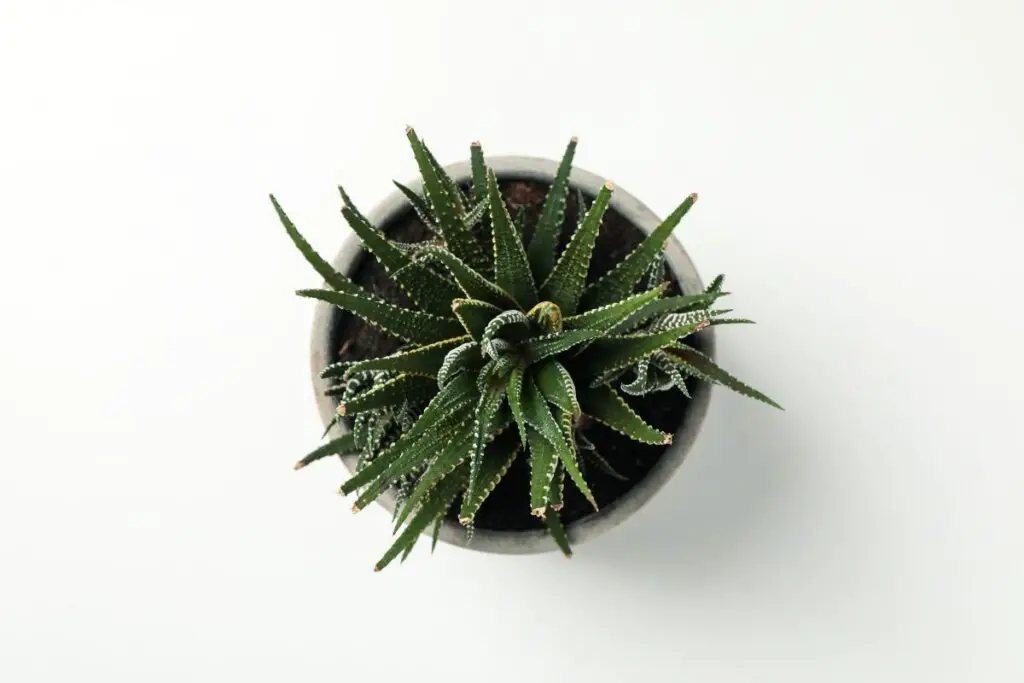
Can I call Haworthia a cactus plant?
Haworthias belong to regions of South Africa and Namibia. In such places, they grow over rocky areas under the shade of bushes and grasses.
Some Haworthia varieties are also called Zebra Cactus or Zebra Succulents.
Haworthias are real succulents because, like other succulents, they store water in their leaves and thus have low demand for watering.
So do cactus plants.
Haworthias are sometimes sold and called a cacti plant. But, in reality, they are not cacti.
They have thorns, but they can still not be called real cactus plants.
To understand its reason, you first need to know the difference between cactus and succulents.
What is the difference between a cactus and a succulent?
The first and foremost difference between a cactus and a succulent is their growth of thorns.
Both hold thorns.
A true cactus will grow these thorns from areoles. Areoles carry numerous thorns.
But, succulents don’t have such areoles.
They grow thorns at the edges of the leaves or the tips.
They have sharp, pointed leaf tips, and some varieties even have spines at the edges.
They cannot grow more like cacti due to the absence of areoles.
Another difference is the region.
All the cactus plants belong only to New World, especially America.
But most succulents are native to not one but different regions.
One similarity between the cactus and succulents is their ability to store water.
Both can store water and stay without water for a few weeks.
Why is Haworthia not considered a cactus plant?
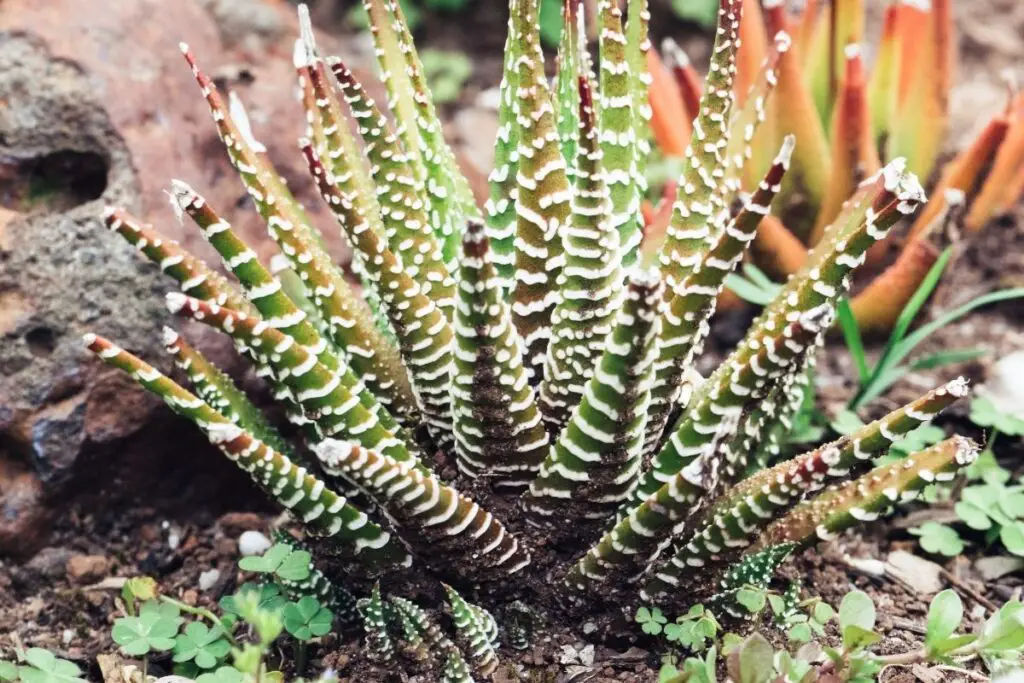
Haworthias are small cactus-like plants having pointed leaf tips.
They are called zebra cacti and sold as cactus plants, but they are not real cactus plants.
It is because of the following features:
They don’t have areoles.
One single areole from one single place grows up to 3 to 5 thorns.
Such a feature is not seen in Haworthia.
Haworthias have a single non-acute spine at the leaf tips.
Some have thorns at the edges, but they don’t grow from areoles.
Additionally, only one thorn grows from one single area.
All the Haworthia varieties do not have thorns.
Haworthias have leaves, but cactus plants don’t have foliage.
Haworthias belong to Africa, but all the cactus plants belong to America.
One says, “All cacti are succulents, but all succulents are not cactus.”
The difference is due to the growth of thorns from areoles.
And the similarity is due to water storage capacity.
But, why Haworthia is still called a Zebra Cactus?
Not all Haworthias are called by the name Zebra Cactus.
Haworthia fasciata varieties are mostly called by this name.
The name “Zebra” is given due to their appearance.
The foliage has white, zebra-looking stripes.
Haworthia fasciata is also confused with Haworthia attenuata because they too have white stripes and pointed leaf tips.
The reasons why Haworthia is called a cactus are:
- Both Fasciata and Attenuata have a non-acute thorn or spine at the tips of their foliage.
- Haworthia Bolusii has thorns at the leaf edges and leaf keel, but not from areoles.
- They can grow over rocky areas where water drains well.
- You can water less because they hold water in their leaves.
They grow well when receiving bright sunlight.
But it must be bright indirect sunlight.
It saves them from sunburn, especially during the summers.
However, some varieties can tolerate direct sun.
Due to these features, Haworthias are considered cactus plants.
A cactus can grow multiple thorns from one single areole in one single area.
Such a thing is not visible in Haworthias.
Despite having these similarities, you cannot call a Haworthia a true cactus plant.
Can I grow Haworthia in cactus soil?
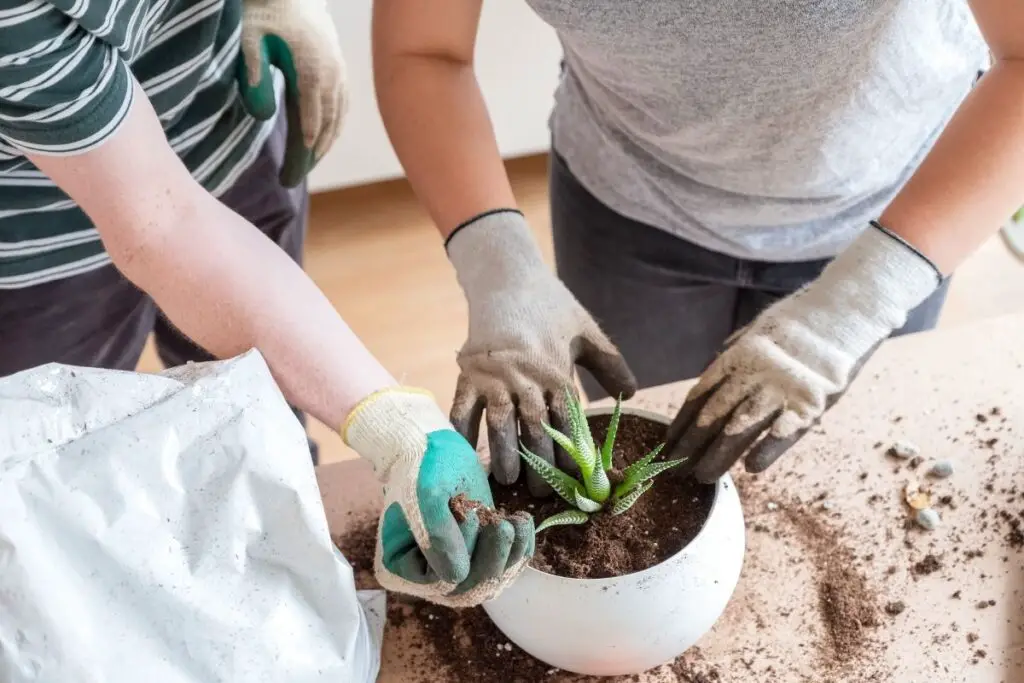
Haworthias require well-drained soil to stay fit and healthy.
They grow over rocky beds under shrubs and grasses in their natural habitat.
The soil requirement for Haworthia is the same as that of cactus plants.
Since this feature matches, you can use cactus potting soil for Haworthias.
A commercial cactus potting soil contains porous materials like perlite and pumice, which help to improve drainage.
Using cactus soil for Haworthia is a great beginner substrate.
If you want to grow Haworthia in containers, but you are not much aware of the correct soil for Haworthia, you can simply use cactus potting mix.
You can even grow Haworthias in pumice only.
The only problem is you have to water and fertilize them more often.
Other kinds of soil mixes which you can use for planting Haworthias directly in the ground are:
Looking for gardening supplies? We have tested 100's of products before recommending them to you guys. Check out our best pick below:
| Image | Gardening Supplies | Best Price? |
|---|---|---|
 Top
Top Top
Top | Raised Garden Bed Kit | Check On Amazon |
 | XLUX Soil Moisture Meter, Plant Water Monitor, Soil Hygrometer Sensor for Gardening, Farming, Indoor and Outdoor Plants, No Batteries Required | No Results |
 Top
Top Top
Top | 82 Pcs Garden Tools Set and Extra Succulent Tools Set | Check On Amazon |
 | Joeys Garden Expandable Garden Hose with 8 Function Hose Nozzle, Lightweight Anti-Kink Flexible Garden Hoses, Extra Strength Fabric with Double Latex Core, (50 FT, Black) | No Results |
 Top
Top Top
Top | Dual Chamber Compost Tumbler | Check On Amazon |
 Top
Top Top
Top | Sunnyglade Plant Stakes | Check On Amazon |
 Top
Top Top
Top | Organic Cold Pressed Neem Seed Oil | Check On Amazon |
 Top
Top Top
Top | Mighty Mint Gallon :-Insect and Pest Control Peppermint Oil | Check On Amazon |
 Top
Top Top
Top | Scotts DiseaseEx Lawn Fungicide | Check On Amazon |
 Top
Top Top
Top | Jacks Classic 20-20-20 All Purpose Fertilizer | Check On Amazon |
 Top
Top Top
Top | 30,000 Seeds Pollinator Attracting Wildflower Mixture | Check On Amazon |
 Top
Top Top
Top | Survival Vegetable Seeds Garden Kit-Over 16,000 Seeds | Check On Amazon |
Recipe 1
Equal parts of:
- 60% Coarse sand
- 40% Potting soil/garden soil
Recipe 2
- 50% gravel of appropriate size
- 50% of soil, coarse sand, and organic fertilizer
Recipe 3
- 40% parts potting soil/garden soil
- 40% parts small gravel
- 20% part perlite or pumice
How to grow and care for Haworthia?
Now that it is clear that Haworthias are not cactus, we will share with you the right care tips for Haworthia so that the remaining confusion gets cleared.
In the end, you will understand how different the care tips of Haworthia are from that of cacti. So, let’s begin.
Haworthia light requirements
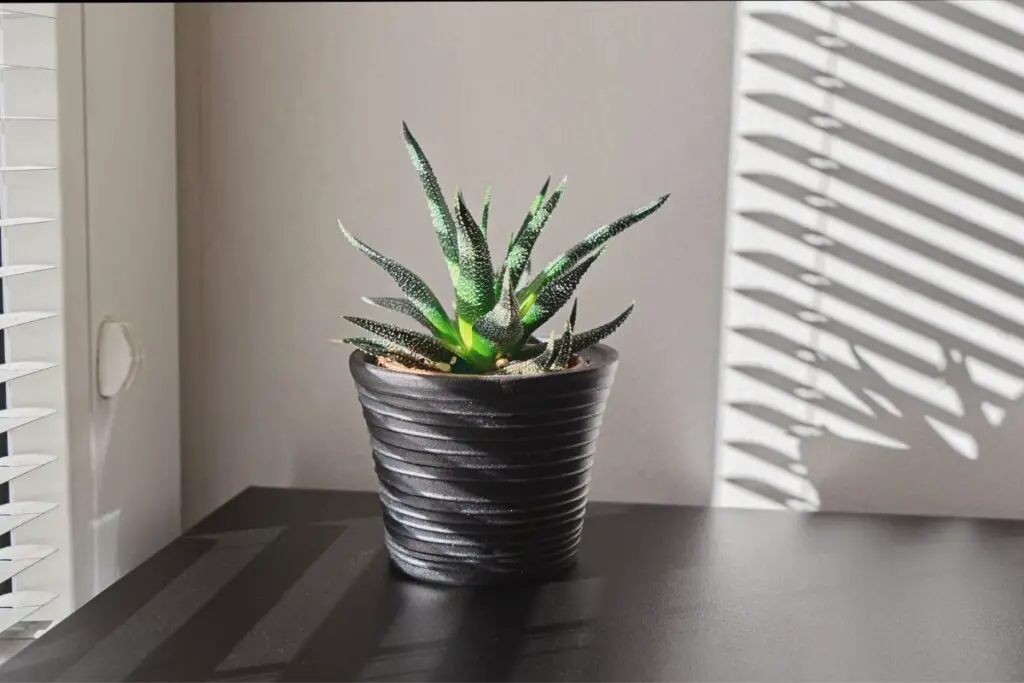
Haworthias do well in bright indirect sunlight.
Though they can tolerate direct sunlight to some extent, too much direct sunlight can result in sunburn.
That is why they do well in the filtered sunlight.
Their demand for filtered light makes them ideal as a houseplant.
For an outdoor location, please select a site in your garden where they can get the direct morning sunlight for at least 3-4 hours.
It is perfect, soothing, and less intense than the daytime or afternoon.
When the sun gets intense during the day, put on shading nets to protect them from sunburns.
Their leaves are quite sensitive and will get burnt if they get direct sun, especially during the summers.
However, exposing them to direct sunlight for 1-2 hours can reveal their colors of red and orange.
Expose them gradually so that they prepare themselves to tolerate the direct sun.
Soon you will find them turning red.
Don’t extend the exposure timing, and don’t do it in summer.
Also read: How Much Light Does Haworthia Need? (Haworthia Light Requirements)
Watering Haworthia
Haworthias don’t need to be watered very often.
Once in every 2 to 3 weeks is enough.
Firstly, they store water in their leaves.
Secondly, they don’t stay under direct sunlight. That is why they need time to dry fully.
If you cannot follow this regime, check the moisture level daily and then water.
Whenever the top inches of the soil get completely dry, the plant is ready for watering.
During the winters, water Haworthias less.
Haworthias absorb less water during winters due to low evaporation. Watering too frequently during such moments can overwater them.
Also read: How Often To Water Haworthia? (Haworthia Water Requirements)
Soil
Let Haworthia have well-drained and slightly nutritious soil. Concentrate more on drainage.
To improve drainage, you can add components like perlite, pumice, river sand, gravel, coir, scoria, etc.
For potted Haworthias, you can only use cactus potting mix without adding any extra soil.
Also read: What Soil To Use For Haworthia? (+Ideal Soil Mix)
Fertilizer
Fertilize Haworthia once during the spring and again once in the fall.
Don’t fertilize if you are unaware of the amount or frequency.
Haworthias won’t mind much if you don’t fertilize them.
Changing the soil every 2-3 years will give them fresh soil and nutrients to keep them healthy.
But if the plant shows any sign of nutrient deficiency, for example, deficiency of iron or manganese causing brown leaves, you have to fertilize them.
Avoid during summer and winter.
Also read: How To Fertilize Haworthia? (Best Fertilizer+When To Use)
Temperature and humidity
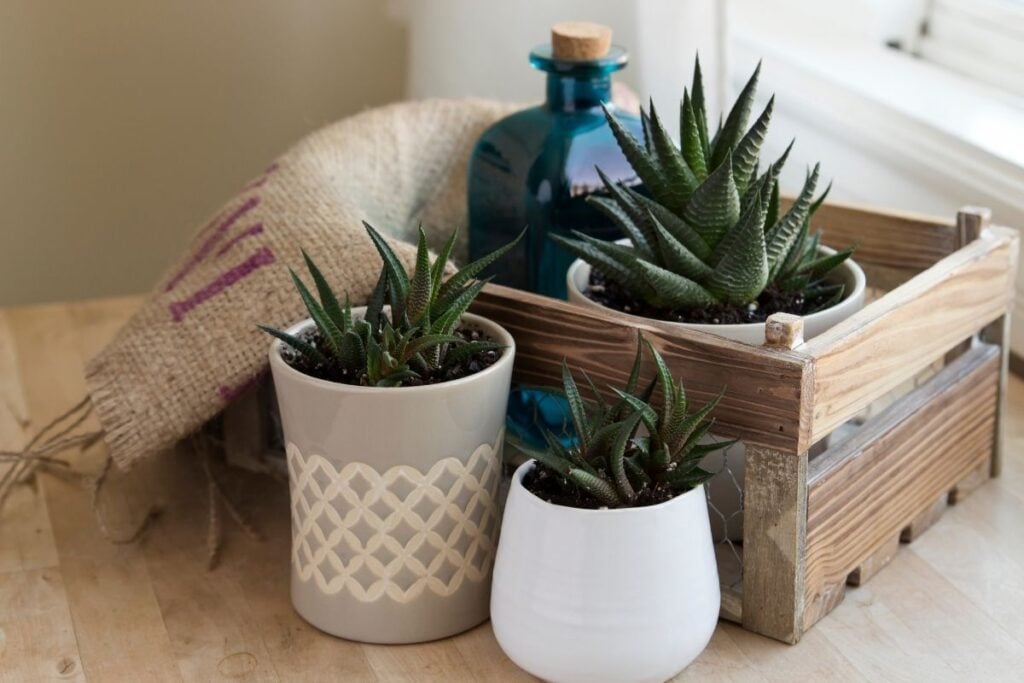
Outdoors, you cannot control the temperature or humidity.
If your region belongs to zones 8-11, Haworthias can easily grow outdoors without any botheration.
During high temperatures, give them shade to protect them from the sun heat.
Don’t increase watering just because it’s summer.
Haworthias stay dormant when the temperature rises above 80°F.
In the winters, if your region receives temperatures below 30°F, grow Haworthia in containers so that you can bring them indoors during the cold.
They can tolerate cool winters, not frozen.
Haworthias don’t have much demand for humidity. 25 to 40% is enough.
If your region has low humidity, increase it by misting, grouping plants, or putting water trays around the plant.
Also read: Do Haworthia Like Humidity? (Misting & More)
Dormancy
Haworthias go through a period of dormancy during the summers.
It is the time when Haworthias take rest for 6 to 8 weeks.
They turn off their growth mode and switch on their survival mode.
When they rest, they do not absorb or use any water or nutrients like they do in their growing periods.
That is why you should not water or fertilize Haworthias during their dormancy.
But if you are unknown to it or do it anyway, the plant will suffer overwatering and over-fertilization, further raising various severe issues.
Check for pests
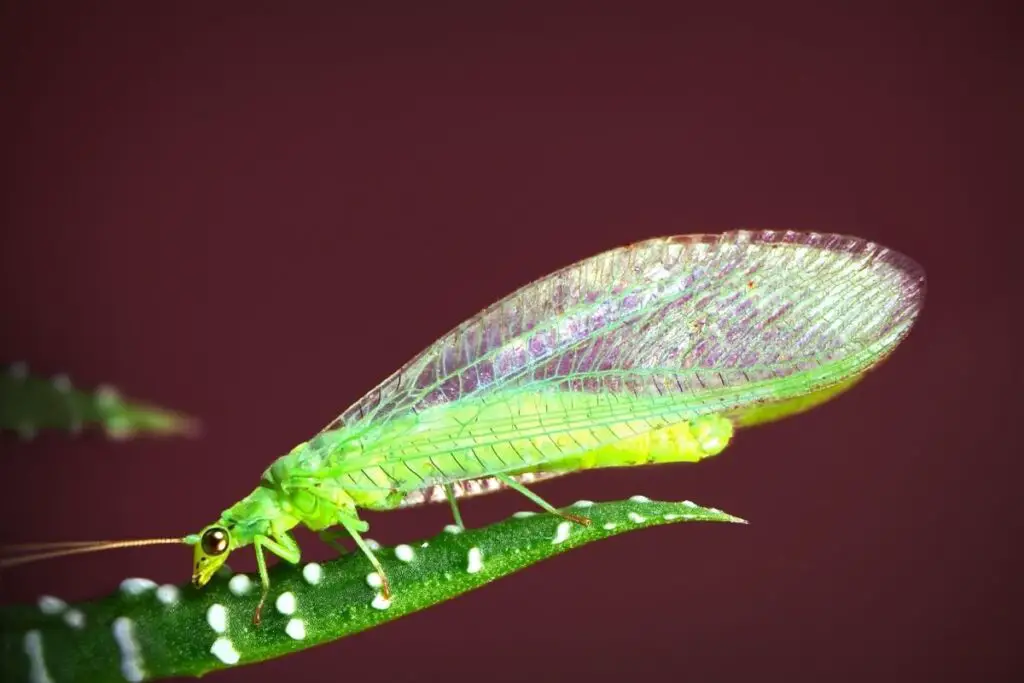
Outdoors, there are high chances of bug infestation.
Though Haworthias rarely get attacked by bugs, you still should check the plant daily.
Mostly mealybugs are the main culprits.
They feed on their juices, making the plant pale, weak, and vulnerable to diseases.
Dabbing or spraying rubbing alcohol and applying insecticides or soapy water are suitable ways to get rid of pests.
Sometimes, lizards can eat up these Haworthias.
So be careful and apply some commercial products around your garden bed to deter these kinds of pests and insects.
Final thoughts
Many people consider Haworthias as cactus plants due to their thorns and water storage capacity.
But after coming to the end of this article, it must be clear to you that Haworthias are not truly cactus but succulents.
To clear your confusion more, I have shared some basic needs for Haworthia in this article so that you can understand the difference between the care of a cactus and Haworthia succulent.
It will stop you from thinking of Haworthia as a cactus or taking care of them like a cactus. Go through the care tips thoroughly to prevent silly mistakes.
What family is Haworthia in?
Haworthias belong to the family of Asphodelaceae and the sub-family of Asphodeloideae.
They are succulents and perennial.
Though some varieties are called zebra cactus, they are not cactus.
The name zebra is given due to their zebra-like white strips on the foliage.
Reference: The Haworthia Society, Botanical Studies, University of Wisconsin-Madison, Sciencedirect, Researchgate, Haworthia Study.
